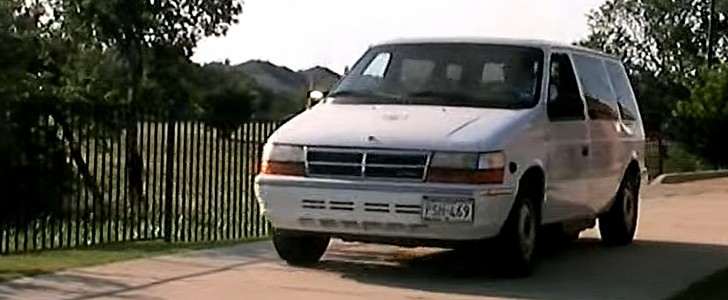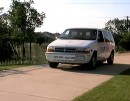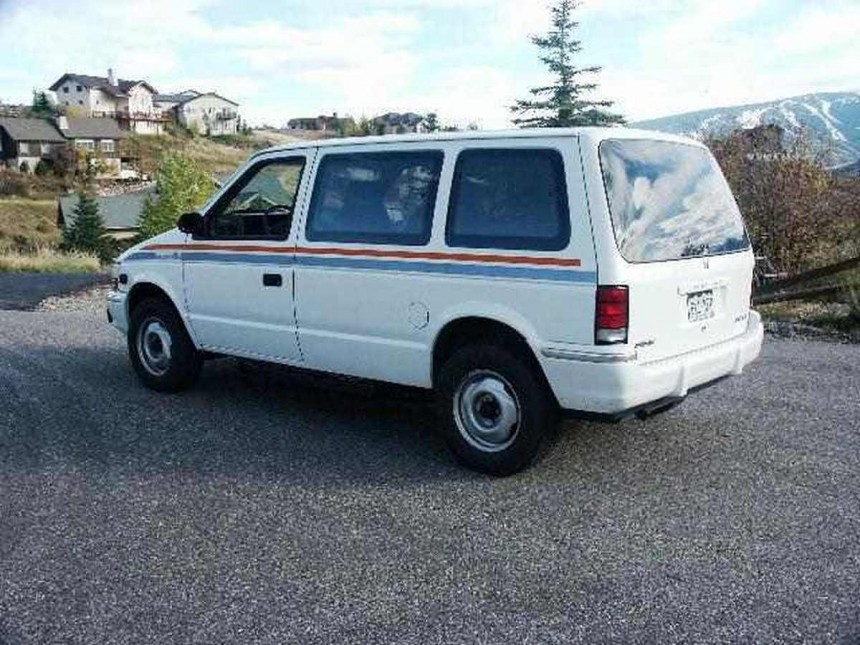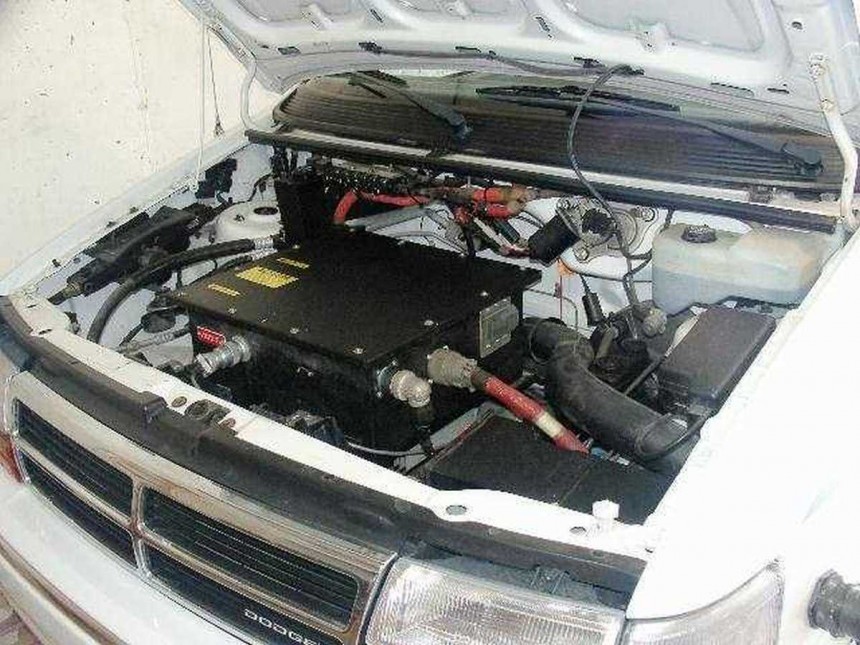When Chrysler unveiled the Airflow concept at the 2022 Consumer Electronics Show, it also announced plans to introduce its "first battery-electric vehicle by 2025." It's not yet clear whether it will revive the "Airflow" badge, but I can tell you that it's not the brand's first production EV.
That one arrived in the 1990s, but before we get to it, I'm going to tell why electric cars are far from new to Chrysler.
While official documentation dates Chrysler back to 1925, its roots are much older than that. The brand came to be when Walter P. Chrysler renamed Maxwell-Chalmers, the company that actually built the first Chrysler automobile in 1924.
The merger was created a few years before Walter P. Chrysler took over and Maxwell itself goes back to the 1910s when it incorporated Columbia Motor Car. The latter was previously called Electric Vehicle and before that, it was known as Electric Carriage & Wagon Company. Its founders, Henry G. Morris and Pedro G. Salom created the Electrobat, one of the first electric automobiles, in 1894.
But it took almost 100 years for the first production EV with a "Chrysler" emblem to arrive. It was called the TEvan, it was based on the Chrysler Town & Country / Dodge Caravan minivans, and entered production in 1993. And of course, it was preceded by a few experimental vehicles that relied on battery power.
The ETV-1, for instance, was created in 1979. A concept car that resulted from a collaboration between Chrysler and General Electric, the ETV-1 never made it past the concept phase, but it was a promising design for the era. Its electric motor was good for 41 horsepower, enabled the coupe to run for at least 70 miles (113 km) on a single charge, and reached a top speed of 65 mph (105 kph).
Chrysler also teamed up with Chloride to create an electric version of the Dodge 50 truck in 1981. Fitted with a different type of electric motor, it was far from impressive on paper due to its 55-mile (89-km) range and a 40-mph (64-kph) top speed.
Following these experiments, Chrysler kicked off a more serious EV program in 1991, this time around in cooperation with the Electric Power Research Institute. The collab spawned the TEVan concept in 1992 and a similar production model in 1993. The vehicle was based on the corporation's then highly successful minivans, the Chrysler Town & Country and Dodge Caravan.
The TEVan's drivetrain consisted of a General Electric DC motor coupled to a two-speed transaxle and a 180-volt battery pack. While some vehicles came with nickel-iron batteries, others were fitted with nickel-cadmium packs.
The combo generated a peak output of 70 horsepower and enabled the van to travel for up to 50 miles (80 km) on nickel-cadmium batteries and up to 60 miles (97 km) with a nickel-iron pack. The owner's manual stated that the TEVan had an 80-mile (129-km) range.
Far from feasible compared to contemporary gasoline-powered vans, the TEVan was sold mainly to electric utility companies. And that's the reason why Chrysler isn't talking more about this EV. This and the fact that production was limited to fewer than 100 units. While Chrysler's press materials claim 80 of them were sold, other sources state that only 56 examples were completed.
Either way, the TEVan wasn't available on a large scale and they were quite expensive at $120,000 a pop. Considering inflation, that would be about $230,000 in 2022. Ouch!
Many of these vans were scrapped after a few years, but about a dozen of them are still known to exist in private hands. According to Allpar, four or five were still in use in 2020.
While the TEVan wasn't offered to the general public, Chrysler didn't abandon the idea. In 1997, it introduced the EPIC (Electric Power Inter-urban Commuter. Produced by the Dodge and Plymouth divisions, it used a more advanced lead-acid battery pack with nearly twice the voltage of the TEVan. The EPIC had a similar fate, being leased to government and utility fleets.
With Chrysler set to go all-electric by 2028, the battery-powered minivan is likely to make a comeback with modern technology and nationwide availability. Hopefully, it will arrive just in time to save the company that made the minivan a thing.
While official documentation dates Chrysler back to 1925, its roots are much older than that. The brand came to be when Walter P. Chrysler renamed Maxwell-Chalmers, the company that actually built the first Chrysler automobile in 1924.
The merger was created a few years before Walter P. Chrysler took over and Maxwell itself goes back to the 1910s when it incorporated Columbia Motor Car. The latter was previously called Electric Vehicle and before that, it was known as Electric Carriage & Wagon Company. Its founders, Henry G. Morris and Pedro G. Salom created the Electrobat, one of the first electric automobiles, in 1894.
But it took almost 100 years for the first production EV with a "Chrysler" emblem to arrive. It was called the TEvan, it was based on the Chrysler Town & Country / Dodge Caravan minivans, and entered production in 1993. And of course, it was preceded by a few experimental vehicles that relied on battery power.
Chrysler also teamed up with Chloride to create an electric version of the Dodge 50 truck in 1981. Fitted with a different type of electric motor, it was far from impressive on paper due to its 55-mile (89-km) range and a 40-mph (64-kph) top speed.
Following these experiments, Chrysler kicked off a more serious EV program in 1991, this time around in cooperation with the Electric Power Research Institute. The collab spawned the TEVan concept in 1992 and a similar production model in 1993. The vehicle was based on the corporation's then highly successful minivans, the Chrysler Town & Country and Dodge Caravan.
The TEVan's drivetrain consisted of a General Electric DC motor coupled to a two-speed transaxle and a 180-volt battery pack. While some vehicles came with nickel-iron batteries, others were fitted with nickel-cadmium packs.
Far from feasible compared to contemporary gasoline-powered vans, the TEVan was sold mainly to electric utility companies. And that's the reason why Chrysler isn't talking more about this EV. This and the fact that production was limited to fewer than 100 units. While Chrysler's press materials claim 80 of them were sold, other sources state that only 56 examples were completed.
Either way, the TEVan wasn't available on a large scale and they were quite expensive at $120,000 a pop. Considering inflation, that would be about $230,000 in 2022. Ouch!
Many of these vans were scrapped after a few years, but about a dozen of them are still known to exist in private hands. According to Allpar, four or five were still in use in 2020.
With Chrysler set to go all-electric by 2028, the battery-powered minivan is likely to make a comeback with modern technology and nationwide availability. Hopefully, it will arrive just in time to save the company that made the minivan a thing.















